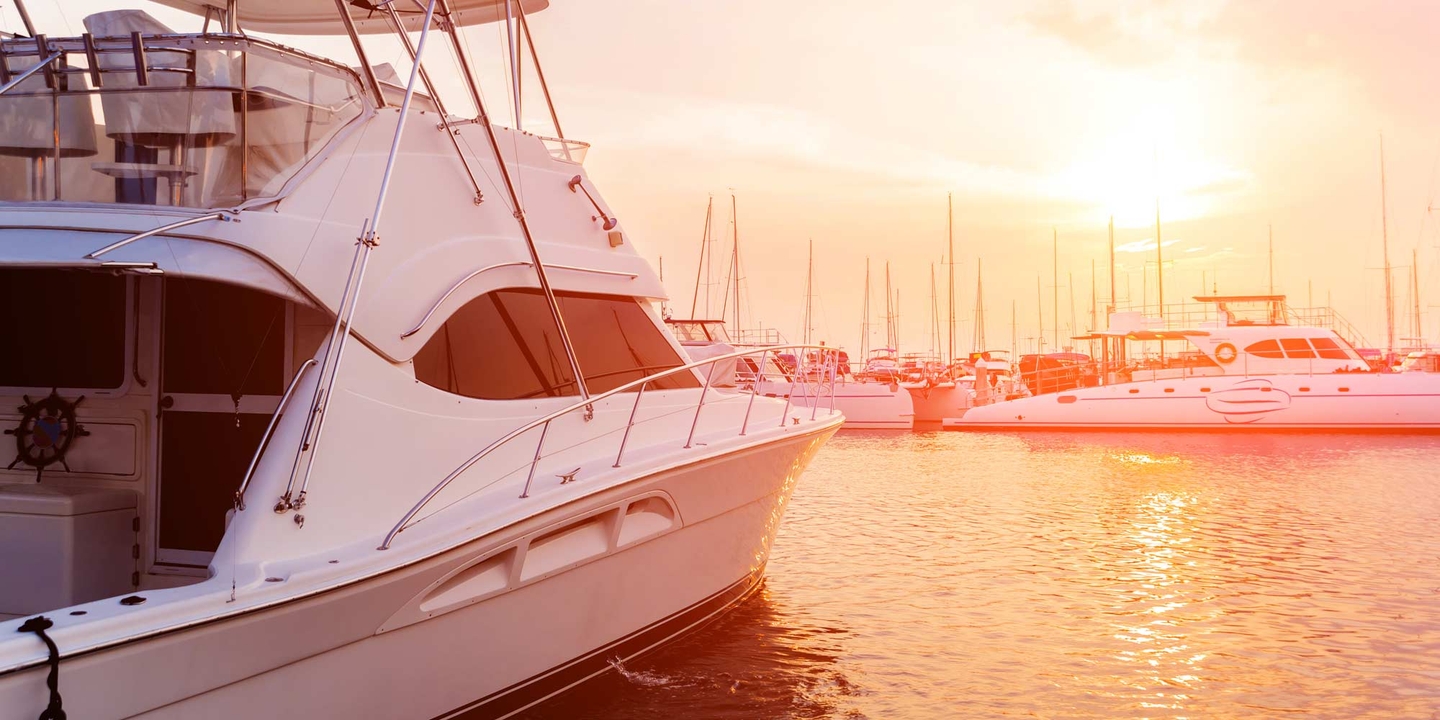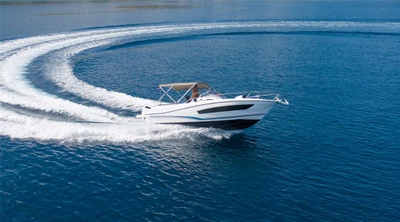How to dock a boat
3 min read
Very few things can get a boater’s heart pumping faster than a tricky docking situation. On a good day, docking a boat is relatively easy. You pull into the slip, tie off a couple of lines, and get on with your day. But experienced boaters know that things can go sideways — and fast — when it comes time to dock your boat (most boats have a few dings and scratches to prove it — mine included).
It’s important to learn how to properly dock a boat. Here’s what you need to know to perfect your dock boating skills.
What do you need to know before docking a boat?
Types of docks
When learning how to dock a boat, you must know the two most common types of docks you might encounter. A boat slip is like a designated parking space on the water. When docking your boat in a slip, you’ll secure your vessel by tying off on both sides of the dock.
A boat dock or end tie slip is usually T-shaped and only requires you to tie off on one side of the boat (the one facing the dock, not the water).
Types of knots
Once you’ve safely arrived in a slip or beside a dock, you must be prepared to tie off. Three common boating knots include the cleat hitch, clove hitch, and bowline.
The cleat hitch is the most used knot when docking a boat, so be sure to master it if you haven’t done so already. Learning a clove hitch might also be useful if you’re planning to tie off on a post or piling. Finally, a bowline is easy to undo because it creates a loop at the end of the line.
Weather and tides
Pay close attention to the wind, fog, or rain when preparing to dock a boat. Is the wind pushing your boat? Can you see the dock? Accounting for how weather affects your ability to steer or see is essential for boating safety. Is there a strong current pushing against your boat? Will a lower tide impact your ability to approach the dock? You may need to alter your course or approach to account for a lower water level or tidal push.
Visibility and audibility
It’s always important to be aware of other boats and know proper boating etiquette on the water and in the harbor. Be sure to give everyone plenty of space to avoid close calls. What can you see from your steering station? And what can’t you see? If you know you have a blind spot, ask a passenger to be your eyes and ears.
Can you hear other passengers giving directions? What about people on the dock who might need to communicate with you? Keep unnecessary noise to a minimum while you dock the boat. The fewer distractions, the better.
Steps to docking a boat
Every approach will be a little different, depending on the boat, the dock, and the conditions. Here are some best practices for boat docking to keep in mind.
1. Drop your fenders
Be sure your fenders are in place before approaching the dock. Ideally, you won’t be bumping into anything, but if you do (it happens to all of us), you’ll be glad they were down.
2. Line up your approach
Be sure to have your lines ready before you begin your approach. Double-check that you have secured them to the boat and ready to throw or grab as soon as you’re close. Position your boat to pull straight into the slip or alongside the dock. Don’t try to come in from an angle.
3. Take it slow and steady
Pull in slowly and gently once you’ve lined up your approach. Generally, you never want to pull into a dock any faster than you’d be willing to hit it. It can be tempting to rush — especially when other people are watching. But trust me on this: bailing on an approach 100 times is less embarrassing (and less costly) than botching an approach once. If it’s not right, back out and reset.
4. Don’t force it
If you get blown or pulled off course, don’t be afraid to back off and try again. Starting the process over is better than hitting the dock, (or worse, another boat). If you hit another boat, make sure you know how to report a boating accident.
Docking a boat and launching a boat can be intimidating even for seasoned boaters, but you’ll get more comfortable the more you practice. Learn how boat insurance can provide protection in case of a boating accident and learn if boat insurance covers boat docks.






